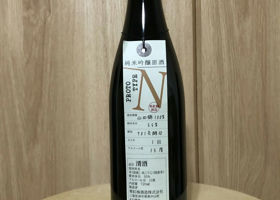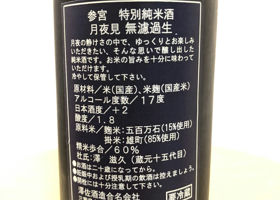

qansah
The aroma is sweet and sake-like.
The taste is bitter first, followed by the sweetness and umami of the rice.
The sourness and bitterness come later, and the umami taste lingers on.
The impression is that it is a dry sake with good drinkability.
Rice: 100% Yamae-Nishiki produced in Nagano Prefecture
Rice polishing ratio:65
Alc.: 15%.
Japanese>English









































